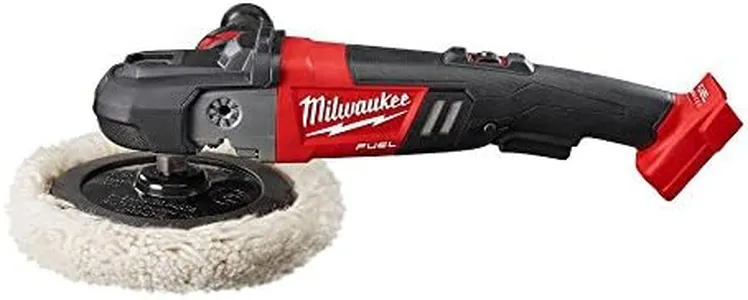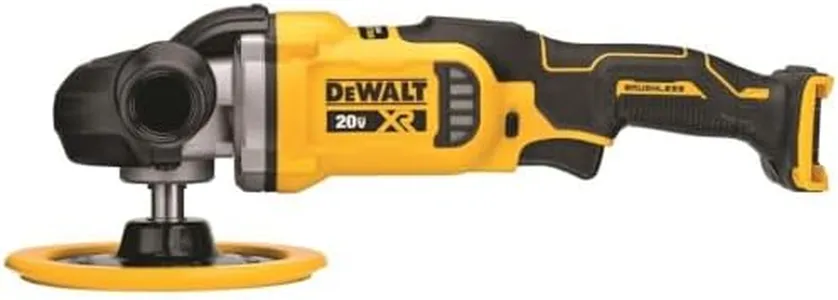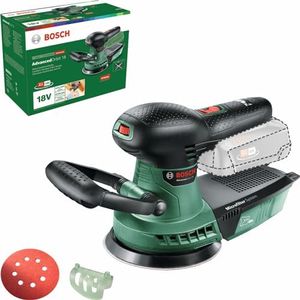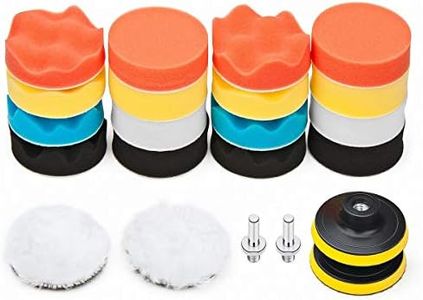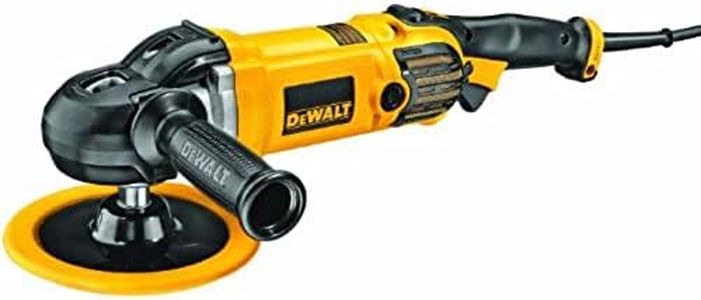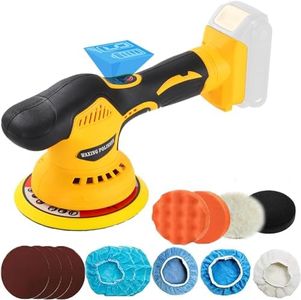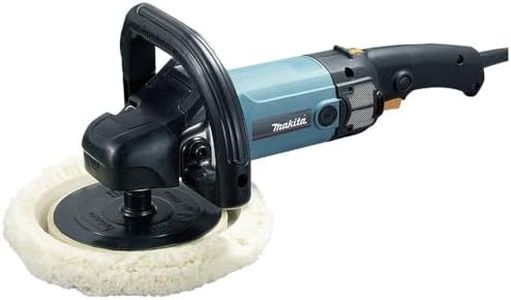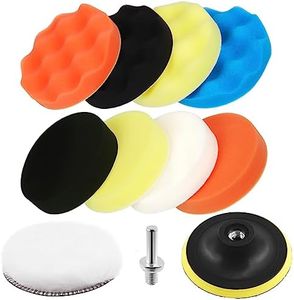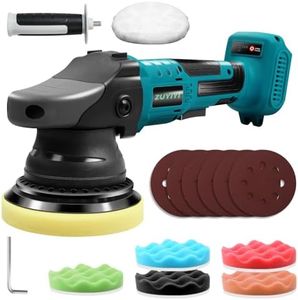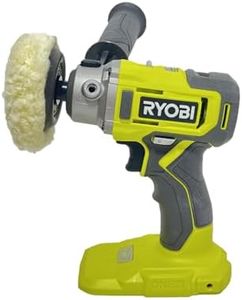We Use CookiesWe use cookies to enhance the security, performance,
functionality and for analytical and promotional activities. By continuing to browse this site you
are agreeing to our privacy policy
10 Best Car Buffers
From leading brands and best sellers available on the web.Buying Guide for the Best Car Buffers
When shopping for a car buffer, it's important to consider how often you'll use it, the type of work you plan to do, and your experience level. Car buffers can make maintaining your vehicle's appearance much easier, but picking the right one depends on understanding a few core features. By looking at key specifications, you'll be able to select a buffer that helps you achieve great results while being comfortable and safe to use.Type (Rotary vs Dual Action)The type of buffer refers to how the head of the machine moves. Rotary buffers spin in a single circular motion, providing strong polishing power, which is great for removing deep scratches and heavy oxidation but can be risky for beginners since they can easily burn or damage the paint. Dual action buffers move in a random pattern, making them safer and easier to use, especially for beginners and for lighter polishing jobs. If you’re new to polishing or doing light to moderate work, dual action is a safer and easier choice. For heavier corrections, more experienced users might prefer rotary.
Speed (RPM/OPM Range)Speed is measured in revolutions per minute (RPM) or orbits per minute (OPM) and determines how fast the head rotates or oscillates. Higher speeds work better for heavy correction, while lower speeds are suitable for applying waxes and finishing touches. Many buffers offer adjustable speeds, usually from around 1,500 to 6,800 RPM or OPM. Having a wider speed range gives you more flexibility to tackle different tasks and use various pads or products. For most users, a model with variable speed control is best since it allows adapting to your skill level and task.
Pad SizePad size refers to the diameter of the polishing pad the buffer uses, commonly ranging from 5 inches to 7 inches. Larger pads cover more area quickly but can be harder to control, especially on tight or curved panels. Smaller pads offer more precision and are easier for detailed or intricate work. If you're working mainly on large, flat surfaces, a bigger pad is efficient. If you need to polish smaller areas or curves, go with a smaller pad for better control.
Weight and ErgonomicsThe weight and ergonomic design affect how comfortable the buffer is to handle, especially during long detailing sessions. Heavier buffers can be tiring to hold and maneuver, while well-balanced, lightweight designs reduce fatigue. Check for features like padded handles or easy-grip bodies. If you expect to use the buffer for extended periods or if you have limited arm strength, prioritize comfort and lighter weight to make the process easier.
Power Source (Corded vs Cordless)Car buffers are available in both corded and cordless options. Corded models offer consistent power and are ideal for long jobs, but the cord can limit mobility. Cordless buffers provide greater freedom to move around the car, but you'll have to manage battery life and recharging time. Choose corded if you value uninterrupted, longer work sessions, or go cordless for convenience working without worrying about outlets.
Vibration ControlVibration control refers to built-in features that reduce how much the buffer vibrates during use. Excessive vibration can make the tool uncomfortable and harder to handle, especially over longer periods. Some models have special balancing systems or extra padding to minimize this. If you plan to use the buffer frequently or for long sessions, seek out models with good vibration control for a smoother, less tiring experience.
